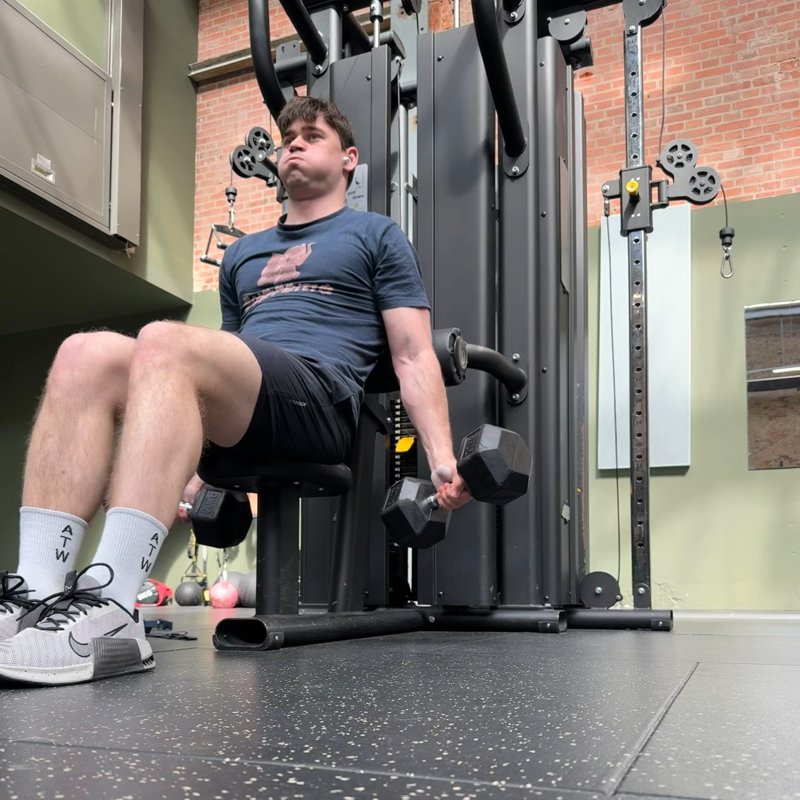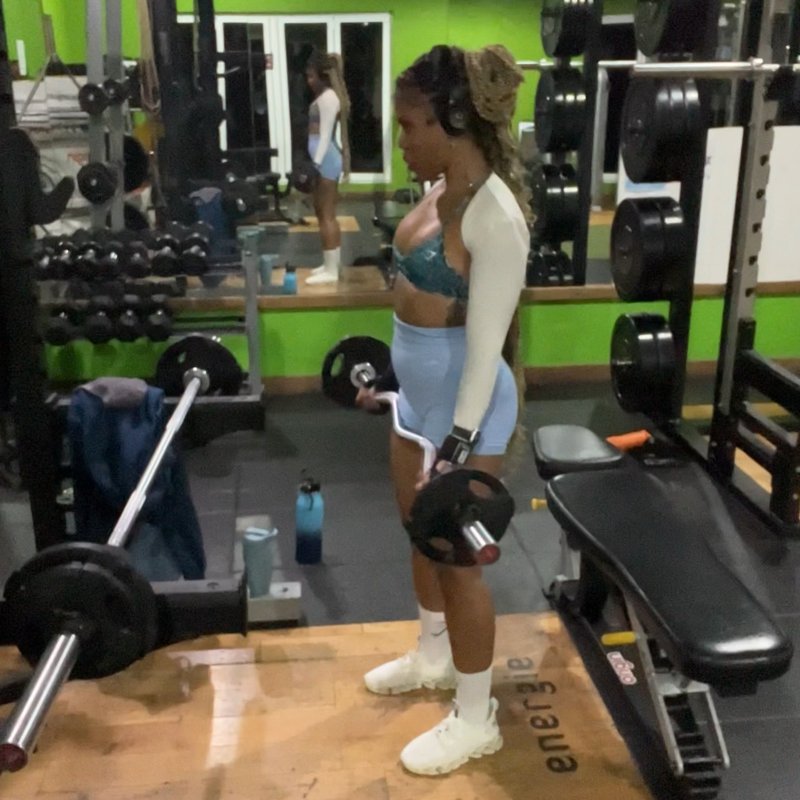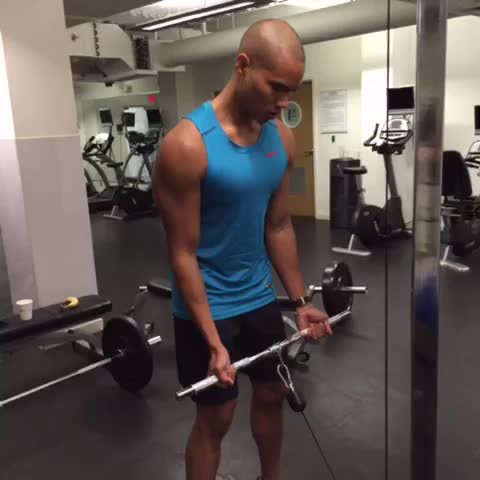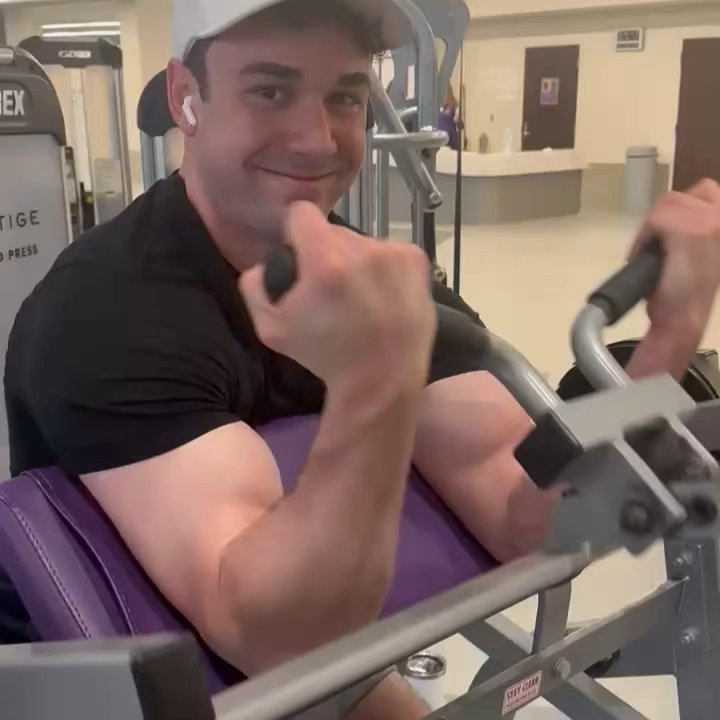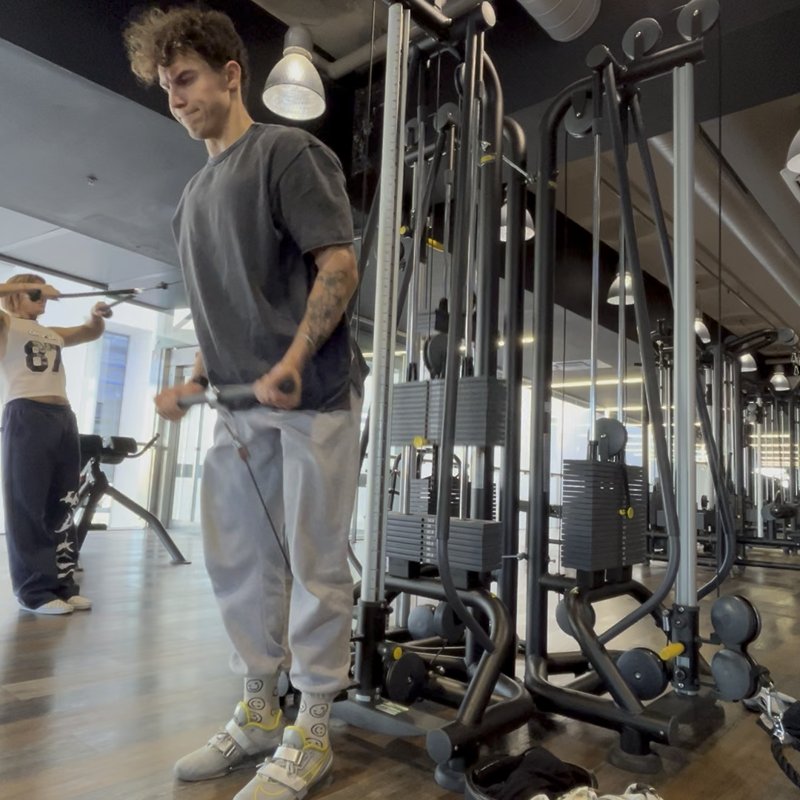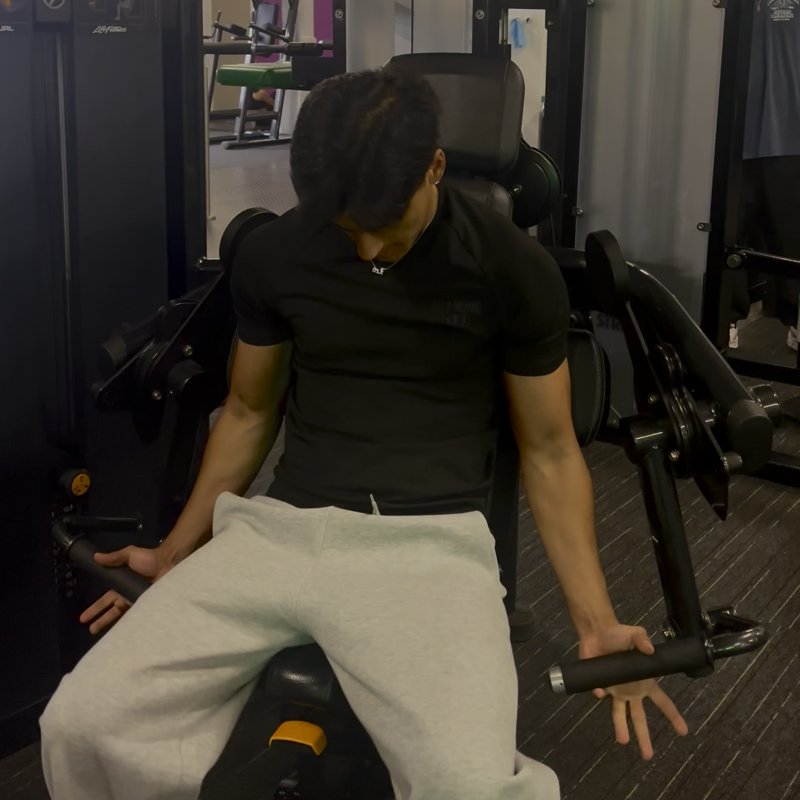Preacher Curl: The Ultimate Guide
The Preacher Curl is a specialized biceps isolation exercise performed on an angled bench that reduces momentum and body English, allowing for concentrated biceps development with strict form.
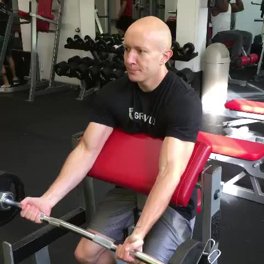
Quick Facts
Key Benefit
Focused biceps isolation with reduced momentum
Primary Muscles
Biceps, Brachialis
Secondary Muscles
Anterior Deltoids, Forearms
Equipment
machine (optional), dumbbells (optional), barbell (optional)
Difficulty
Intermediate
Type
Strength
In This Guide
Ready to master the Preacher Curl?
Track your progress, see improvements over time, and build strength consistently.
Download GravitusThe Preacher Curl is one of the most effective exercises for developing well-defined, peaked biceps through strict isolation. Also known as the Scott Curl (named after bodybuilding legend Larry Scott), this movement uses an angled bench to position the arms for maximum biceps engagement while minimizing the ability to use momentum or "cheat" the weight up. What distinguishes the preacher curl from other biceps exercises is the elimination of body English. By anchoring your upper arms on the angled pad, you remove the possibility of using shoulder movement or back swing to assist the lift. This creates a pure biceps contraction that can significantly enhance muscle development and mind-muscle connection. Additionally, the preacher curl places the biceps in a mechanically disadvantaged position at the bottom of the movement, creating a greater challenge in the stretched position. This increased tension at the stretched point of the range of motion may stimulate additional muscle fiber recruitment and growth. The exercise can be performed with various implements—an EZ curl bar, straight barbell, dumbbells, cables, or specialized machines—making it adaptable to different training environments and preferences. This versatility, combined with its exceptional biceps targeting efficiency, makes the preacher curl a valuable addition to any arm training program. Whether your goal is to build impressive biceps peaks, increase arm size, or simply develop more functional elbow flexion strength, mastering the preacher curl will help you achieve your objectives.
Benefits of Preacher Curls
The preacher curl offers several unique advantages for biceps development.
Strict Isolation
The angled bench eliminates the ability to use momentum, forcing the biceps to do all the work without assistance from other muscle groups.
Peak Development
Particularly effective at developing the peak of the biceps through concentrated tension at specific portions of the muscle.
Form Reinforcement
Teaches proper biceps curl form that can transfer to other curling movements by eliminating common cheating patterns.
Stretch Under Load
Creates significant tension at the lengthened position of the biceps, potentially stimulating additional muscle fiber recruitment.
Mind-Muscle Connection
The isolated nature of the movement enhances the ability to feel the biceps working, improving neuromuscular activation for better overall arm development.
Proper Form & Technique
Setup
- Adjust the preacher bench to a height that allows your armpits to rest comfortably at the top edge of the angled pad.
- Select your weight implement (barbell, EZ bar, dumbbells) with appropriate resistance for controlled movement.
- Sit on the preacher bench seat with your chest against the vertical side of the pad.
- Place your upper arms flat against the angled pad, with armpits touching or very close to the top edge.
- Grip the weight with an underhand grip (palms facing up) at approximately shoulder width.
- For EZ curl bars, use the inner angled grips for comfort; for straight bars, use a shoulder-width grip.
- If using dumbbells, hold them with palms facing upward in a supinated position.
- Start with your arms extended but not completely locked out to maintain tension on the biceps.
Movement
- Keeping your upper arms firmly pressed against the pad, exhale as you curl the weight upward by flexing at the elbows.
- Focus on contracting the biceps to execute the movement, avoiding any assistance from shoulders or back.
- Continue curling until your biceps are fully contracted, typically when forearms are nearly vertical.
- Hold the contracted position briefly, focusing on squeezing the biceps at the peak of the movement.
- Inhale as you slowly lower the weight with control back toward the starting position.
- Lower the weight until your arms are almost fully extended, maintaining slight bend in the elbows at the bottom to keep tension on the biceps.
- Avoid letting the weight "bounce" at the bottom or using momentum to initiate the next repetition.
- Repeat for the desired number of repetitions, maintaining contact between your upper arms and the pad throughout the set.
Key Form Tips
Arm Positioning
Keep your upper arms firmly against the pad throughout the entire movement - this is crucial for proper isolation.
Wrist Alignment
Maintain straight wrists during the curl, avoiding excessive flexion that can lead to wrist strain.
Range of Motion
Find the sweet spot between full extension (which can place stress on the elbow joint) and insufficient range (which reduces effectiveness).
Control
Focus on the negative (lowering) portion of the exercise, taking 2-3 seconds to lower the weight with control.
Elbow Position
Keep your elbows in a fixed position on the pad - avoid letting them slide up or down during the movement.
Muscles Worked
Primary Muscles
- biceps: The two-headed muscle on the front of the upper arm is the primary target, with significant emphasis on the long head that contributes to biceps "peak."
- brachialis: Located beneath the biceps brachii, this muscle assists in elbow flexion and receives substantial work during preacher curls.
Secondary Muscles
- brachioradialis: This forearm muscle assists in elbow flexion, particularly in the early phase of the curl movement.
- anterior deltoids: The front shoulder muscles provide minimal assistance in stabilizing the shoulder joint during the exercise.
- forearms: The muscles of the forearm that control wrist position and assist in gripping the weight.
Common Mistakes and How to Fix Them
Sliding Arms on the Pad
Allowing upper arms to slide up or down the angled pad during the movement reduces effectiveness. Keep your upper arms firmly pressed against the pad throughout the entire set, maintaining a fixed position with your armpits near the top edge of the pad.
Using Excessive Weight
Too much weight leads to compromised form and reduced biceps activation. Select a weight that allows you to perform 8-12 controlled repetitions without losing proper form. The preacher curl is an isolation exercise meant for moderate weights with strict technique.
Bouncing at the Bottom
Using momentum by bouncing the weight at the bottom of the movement reduces effectiveness and increases injury risk. Control the weight throughout the entire range of motion, especially at the stretched position, and avoid completely relaxing the biceps at the bottom.
Incomplete Range of Motion
Not lowering the weight sufficiently or not curling to full contraction limits development. Work through an appropriate range of motion from near-extension (avoiding elbow locking) to complete biceps contraction where forearms approach vertical position.
Lifting Shoulders
Raising shoulders or pulling them away from the pad to assist the curl defeats the purpose of the exercise. Keep your chest firmly against the vertical portion of the bench and shoulders relaxed downward throughout the movement.
Preacher Curl Variations
Equipment Variations
-
EZ Bar Preacher Curl
Using an EZ curl bar, which provides angled grip positions that may be more comfortable for the wrists and elbows than a straight bar.
-
Dumbbell Preacher Curl
Performed with dumbbells, allowing independent arm movement and potentially identifying strength imbalances between sides.
-
Cable Preacher Curl
Using a cable machine with an appropriate attachment, providing constant tension throughout the range of motion.
-
Machine Preacher Curl
Using a specialized preacher curl machine with fixed movement path and adjustable resistance.
Technique Variations
-

Single-Arm Preacher Curl
Focusing on one arm at a time for increased concentration and the ability to address imbalances in arm development.
-

21s Preacher Curl
A specialized technique performing 7 partial reps in the lower half of the movement, 7 in the upper half, and 7 full range repetitions.
-
Reverse Grip Preacher Curl
Using an overhand (pronated) grip to shift emphasis to the brachialis and brachioradialis while still working the biceps.
Frequently Asked Questions
Contrary to some myths, preacher curls don't hurt biceps peak development - they can actually enhance it. The idea that preacher curls "flatten" the biceps is a misconception. While the exercise does place the long head (which contributes to the peak) in a mechanically disadvantaged position at the start, this increased stretch can stimulate greater development over time. The preacher curl was a favorite exercise of Larry Scott, who was known for his impressive biceps peaks. For complete biceps development, preacher curls should be part of a varied approach that includes multiple exercises targeting different portions of the biceps through various angles. Combining preacher curls with exercises like incline dumbbell curls (which emphasize the stretched position of the long head) provides balanced development.
Preacher curls generally require significantly less weight than standard barbell or dumbbell curls due to the isolated nature of the movement and the mechanically disadvantaged position. Most men might use anywhere from 15-25 pounds per arm for dumbbells or 30-70 pounds total for barbell variations when performing strict preacher curls. Women might typically use 5-15 pounds per arm or 20-40 pounds total. However, these are merely guidelines - the appropriate weight is the one that allows you to perform 8-12 controlled repetitions with proper form. If you can't keep your upper arms firmly on the pad or need to use momentum, the weight is too heavy. The preacher curl is an isolation exercise where form and muscle connection are far more important than the absolute weight used.
The ideal sequence depends on your training goals. If building strength in standard curls is your priority, perform those first when your energy and strength levels are highest. If preacher curl performance or biceps isolation is your focus, do preacher curls first. Many bodybuilders prefer performing compound or free-standing movements first (like barbell curls), followed by more isolated exercises like preacher curls. This approach lets you handle heavier weights when fresh, then isolate and further fatigue the muscle afterward. However, occasionally performing preacher curls first as a pre-exhaustion technique can increase mind-muscle connection during subsequent exercises. For a balanced approach, consider alternating which exercise comes first in different training sessions to expose your biceps to varied stimuli.
For most people, including preacher curls in your training 1-2 times per week is sufficient for results. The biceps are relatively small muscles that don't require the same volume or frequency as larger muscle groups. If you're doing a dedicated arm day, you might include preacher curls once per week as part of a comprehensive biceps routine. If you're splitting arm training across multiple days, you might perform preacher curls once or twice weekly with appropriate volume. Like any exercise, avoid training the same movement pattern too frequently without adequate recovery, as this can lead to overuse issues, particularly around the elbow joint. For most trainees, 6-12 total working sets of preacher curls per week (combined with other biceps exercises) provides sufficient stimulus for growth without risking overtraining.
Video Demonstrations

Log in to watch video demonstrations
Login to WatchTips from the Community
-

Position the barbell shoulder width apart. Place back of the arms on pad. Fully extend arms, then bring the weight back to starting position.
-

Normal grip hits the upper and lower heads of the bicep. To add forearm activation, use reverse grip and begin at ½ of your usual weight.
Track your progress with Gravitus
Download Gravitus to log your workouts, track your progress, and join a community of fitness enthusiasts.

Helpful Resources
One Rep Max Calculator
Find your one rep max for any exercise without maximal testing. Essential for developing effective strength training programs.
Calculate 1RMWorkout Programs
Follow structured workout programs created by fitness professionals to maximize your strength and muscle gains.
View Programs